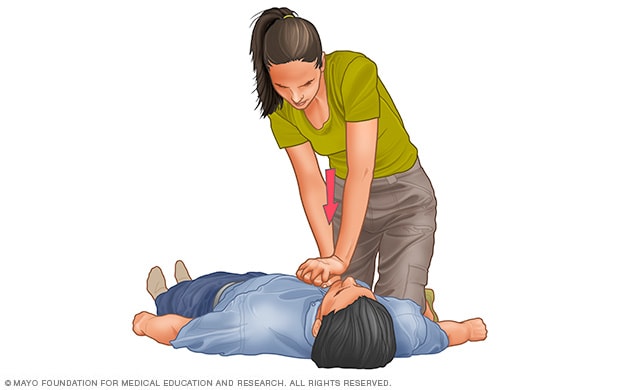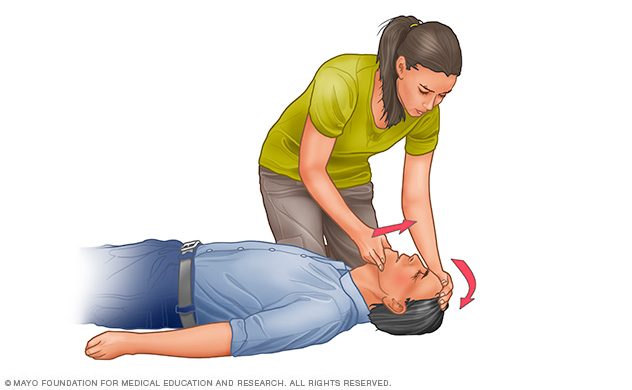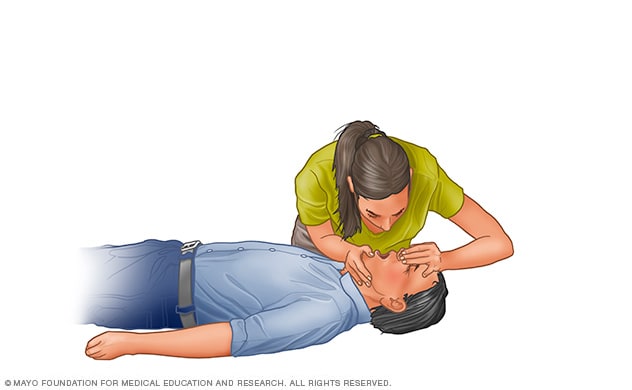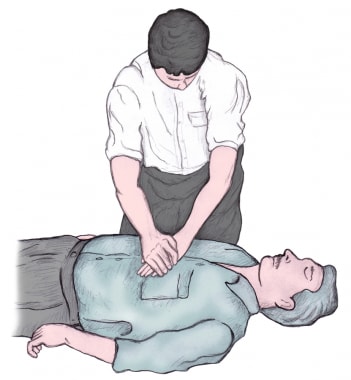Cardio-Pulmonary Resuscitation (CPR) - Part 2: CPR for an adult
It's far better to do something than to do nothing at all if you are fearful that your knowledge or abilities are not sufficient enough. Remember, the difference between your doing something and doing nothing could be someone's life.
Here is advice from the American Heart Association:
- Untrained. If you are not trained in CPR, then provided hands-only CPR. That means uninterrupted chest compression of 100 to 120 a minute until the paramedics arrive. You don't need to try rescue breathing.
- Trained and ready to do so. If you're well-trained and confident in your ability, check to see if there is a pulse and breathing. If there is a pulse and breathing. If there is no breathing or pulse within 10 seconds, begin chest compression. Start CPR with 30 chest compression before giving two rescue breaths.
- Trained but rusty. If you have previously received CPR training but you are not confident in your abilities, then just do chest compression at a rate of 100 to 120 a minute.
The above advice applies to adults, children and infants needing CPR, but not newborns (infants up to 4 weeks old).
CPR can keep oxygenated blood flowing to the brain and other vital organs until more definitive medical treatment can restore a normal heart rhythm.
When the heart stops, the lack of oxygenated blood can cause brain damage in only a few minutes. A person may die within 8 to 10 minutes.
To learn CPR properly, take an accredited first-aid training course, including CPR and how to use an Automated External Defibrillator (AED). If you are untrained and have immediate access to a phone, call 911 or your local emergency number before beginning CPR. The dispatcher can instruct you in the proper procedures until help arrives.
CPR GUARD LINE 2010
- A compression rate of at least 100 per min
- At least 5 cm (2.5 inch) for chest compression depth
- Push hard and fast
- Chest must fully recoil before next compression
- One complete cycle: 30 chest compression to 2 rescue breath
- Each ventilation must over 1 second, just enough to see chest rise
- Call for help
STEPS TO DO CPR
- Danger
- Response
- Compression / Circulation
- Airway
- Breathing
1. DANGER
- Before doing CPR, we must make sure that surrounding are safe and no danger will harm the casualty.
- Ask for help (Call 990 for the ambulance)
2. RESPONSE
- Check for the casualty's response to command, touch and pain
- Casualty may response by eye movement, movement or show verbal response
- The level of responsiveness (Conscious to Unconscious):-
- Alert
- Voice
- Pain
- Unconscious
- If the casualty is unconscious, start the chest compression.
3. COMPRESSION
- Put the person on his or her back on a firm surface.
- Kneel next to the person's neck and shoulders.
- Place the heel of one hand over the center of the person's chest, between the nipples. Place your other hand on top of the first hand. Keep your elbows straight and position your shoulders directly above your hands.
- Use your upper body weight (not just your arms) as you push straight down on (compress) the chest at least 2.5 inches (approximately 5 centimeters). Push hard at a rate of 100 to 120 compression a minute.
- If you haven't been trained in CPR, continue chest compression until there are signs of movement or until emergency medical personnel take over. If you have been trained in CPR, go on to opening the airway and rescue breathing.

4. AIRWAY
- If you're trained in CPR and you've performed 30 chest compression, open the person's airway using the head-tilt, chin-lift maneuver.
- Put your palm on the person's forehead and gently tilt the head back. Then with the other hand, gently lift the chin forward to open the airway.

5. BREATHING
- Rescue breathing can be mouth-to-mouth breathing or mouth-to-nose breathing if the mouth is seriously injured or can't be opened.
- With the airway open (using the head-tilt, chin-lift maneuver), pinch the nostrils shut for mouth-to-mouth breathing and cover the person's mouth with yours, making a seal.
- Prepare to give two rescue breaths. Give the first rescue breath — lasting one second — and watch to see if the chest rises. If it does rise, give the second breath. If the chest doesn't rise, repeat the head-tilt, chin-lift maneuver and then give the second breath. Thirty chest compressions followed by two rescue breaths is considered one cycle. Be careful not to provide too many breaths or to breathe with too much force.
- Resume chest compressions to restore circulation.
- As soon as an automated external defibrillator (AED) is available, apply it and follow the prompts. Administer one shock, then resume CPR — starting with chest compressions — for two more minutes before administering a second shock. If you're not trained to use an AED, a 911 or other emergency medical operator may be able to guide you in its use. If an AED isn't available, go to step 5 below.
- Continue CPR until there are signs of movement or emergency medical personnel take over.

NOTE
- If there is sign of life (Eg: coughing), please check breathing and place the casualty into recovery position.
- Check vital signs (pulse and breathing) every 3 to 5 minutes.

No comments:
Post a Comment